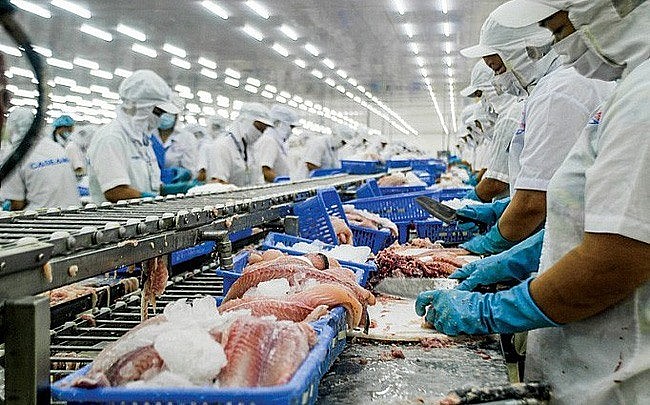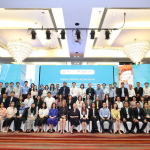Total number of posts 463.
Mexico ranks first in CPTPP importing Vietnamese pangasius
According to the Vietnam Association of Seafood Exporters and Processors, in the first 8 months of 2023, CPTPP buys 158 million USD of pangasius from Vietnam, down 3% over the same period in 2022. In August 8 alone, pangasius exports to this market block reached 2023 million USD, down 23% over the same period. The decline was narrowed from previous months.

In particular, Mexico is still the leading market in the CPTPP in terms of importing Vietnamese pangasius with 7 million USD, down 4% over the same period. It was followed by Canada, Japan and Singapore with $4 million, $3 million and $2.8 million, down 4%, 24% and 14%, respectively.
As of September 15, 2023, Vietnam's pangasius exports to the CPTPP market block reached 2023 million USD, down 167% over the same period last year.
In the first half of September 2023, pangasius exports to markets in the CPTPP mostly recorded positive growth compared to the first half of September 2022.
CPTPP imported nearly 9 million USD of Vietnamese pangasius in the first half of September this year, up 9% over the same period last year. Some markets with positive double-digit growth over the same period in 17 are Japan, Mexico, Canada reaching 2.2022 million USD (up 1%), 3.75 million USD (up 2%), 4.59 million USD (up 1%), respectively.
Although the export value of Vietnamese pangasius to Mexico has decreased, this North American country still maintains its leading position in the CPTPP market in terms of importing Vietnamese pangasius.
Vietnam mainly exports two main pangasius products to Mexico, frozen pangasius fillets and frozen cut pangasius to this market.
The average export price of pangasius to the Mexican market fell to $2.07 per kilogram in August 8, down 2023% year-on-year, which is also the lowest level since the beginning of this year.
In February 2023, the average export price of pangasius to Mexico reached 2023.2 USD/kg, the highest level in the first 62 months of the year. However, in the following months, the price continuously fell and remained below 8.2 USD/kg.
With market signals accelerating in the last months of the year, it is expected that pangasius export turnover to the CPTPP market in September 2023 will record positive growth for the first time since the beginning of this year.
Britain's new membership of the CPTPP will also strengthen value and supply chains within the bloc, accelerate trade liberalization in the region, and facilitate Vietnam's exports to member countries.
Seafood enterprises are making good use of FTAs
Ms. Nguyen Thi Thu Trang – Director of the Center for WTO and VCCI Integration – said that fisheries is one of the industries that make good use of opportunities from FTAs in general and CPTPP in particular. However, for some new markets, the level of utilization of the CPTPP Agreement is good, but in some markets where Vietnam has many FTAs at the same time, the story is which Agreement brings the most benefits to businesses.
Ms. Nguyen Thi Thu Trang said, we have very positive numbers. For example, in the Chinese market, Vietnam's seafood turnover to the Chinese market takes advantage of the ASEAN-China Free Trade Agreement by 95%.
Vietnam's seafood turnover to the Korean market takes advantage of the FTA with this market of 94%; or for the EU market, 83%. Mexico is one of the CPTPP's new markets that also achieved a utilization rate of 77%.
Thus, in general, seafood enterprises are making good use of opportunities from tariffs brought by FTAs.
This is not necessarily too surprising because fisheries in particular and agricultural, forestry and fishery industries in general have a relatively high level of taking advantage of incentives from FTAs, because we use mainly domestic raw materials, therefore, meeting the rules of origin.
However, this does not deny the fact that seafood enterprises are considered as leading enterprises in previous integration and later FTAs in taking advantage of tariff preferences and meeting rules of origin.
In addition to the advantages, according to Ms. Le Hang - Communications Director of the Vietnam Association of Seafood Exporters and Processors, for the seafood industry, the biggest difficulty that is reducing the level of taking advantage of tariffs is the lack of domestic raw materials, especially seafood raw materials. Meanwhile, CPTPP market block is a market block that consumes a large amount of seafood of Vietnam, especially in the Japanese market.
In order to meet the demand for orders and the needs of countries around the world, enterprises are forced to switch to the form of importing raw materials from CPTPP countries and other countries. This means that we are giving opportunities to other markets when we already have the opportunity of 0% import tariffs.
Lack of raw materials, increased input costs ..., so choosing to produce value-added goods and taking advantage of import tax incentives under the CPTPP Agreement are solutions of many enterprises both to stabilize jobs for workers and to take advantage of processing capacity.
There is still plenty of room in the CPTPP market for Vietnamese seafood. However, it is important that we have a stable source of raw materials in the country, as well as diversified sources of imported supplies from intra-bloc countries.
The seafood business community looks forward to the effective companionship and support of ministries and sectors in the current period and the coming time, thereby having good conditions to take advantage of the CPTPP Agreement and other FTAs, to maintain the position of Vietnamese seafood in the world market.














